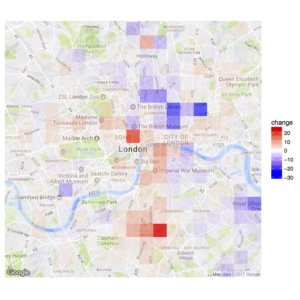The cheap CAJOE Geiger tube radiation detector can be connected to an ESP8266 with WiFi in order to connect to Grafana and other consumers of data. I found however that the headphone port of the CAJOE works better than the VIN output, which all projects I saw use for connection.
The projects I saw recommend to connect the 5V signal output on the CAJOE labeled “VIN” with a 3.3V digital input of the ESP8266. Although 5V can potentially damage the ESP8266, it is correctly found that this does not happen, possibly because upon connection the voltage drops to about 3V.
This way however I could detect no counts on the microcontroller. The CAJOE continued to click, and the indicator LED did blink, but the ESP8266 did not detect any changes on its input pin. Using an oscilloscope it became clear immediately why: if connected this way, there are no impulses on VIN, at least with my device. The voltage remains steadily at about 3V, and does not drop briefly to zero upon each click of the detector.
This clarified the importance of a board modification on the CAJOE that some projects obliquely recommend as necessary for “more reliable” detection. It is changing the 470 kΩ Resistor R19 on the board to 1kΩ, or similar. Bypassing the resistor did lead to detectable signals, but I found the work to be unnecessary.
Using the oscilloscope I found that the headphone jack of the CAJOE already produces a perfectly fine 3.6V output signal on both channels of a stereo headphone. Upon connecting the ESP8266 I could directly count the impulses without any further modification of the CAJOE.
![David Molnar [Update:, PhD]](https://www.srcf.ucam.org/~dm516/wp-content/themes/twentyeleven/images/headers/chessboard.jpg)






